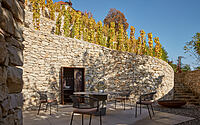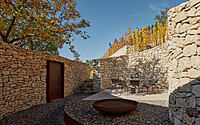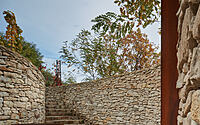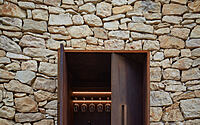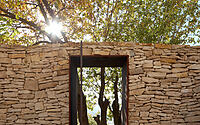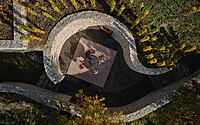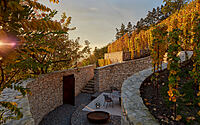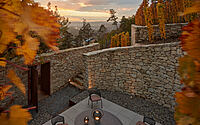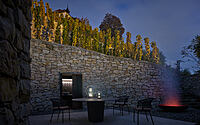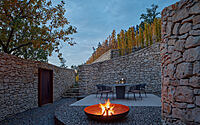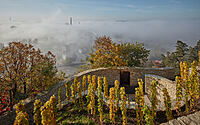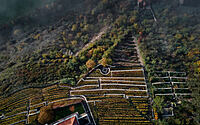Fibonacci: Reviving Prague’s Historic Jabloňka Winery with Marco Maio
In the heart of Prague, where the Vltava River gently winds, sits the classicist château Jabloňka—a testament to the city’s vinicultural legacy. Designed by Marco Maio Architects in 2022, this stone winery in Troja boasts terraced vineyards that offer panoramic views of Prague, the famed “city of wine”. Now known as Fibonacci, the property’s meticulous restoration captures the romantic essence of its storied past, blending seamlessly with innovative designs like the serene Fibonacci Spiral patio—a haven amidst urban cacophony.

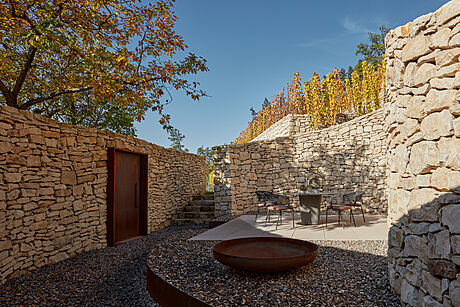
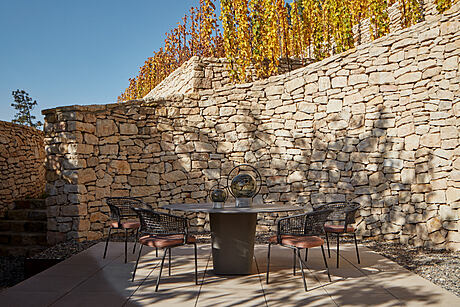
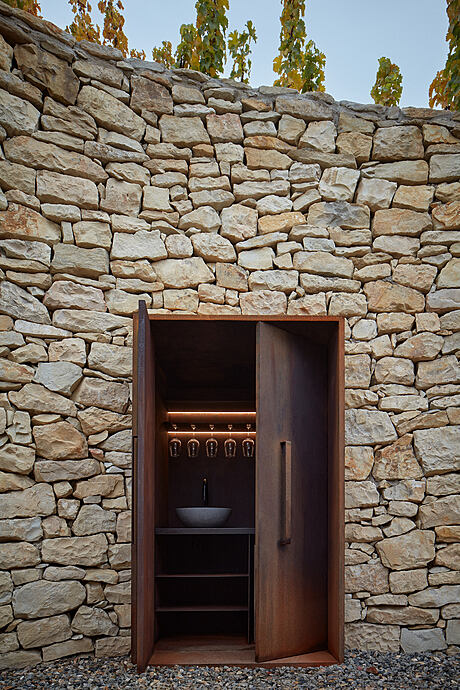
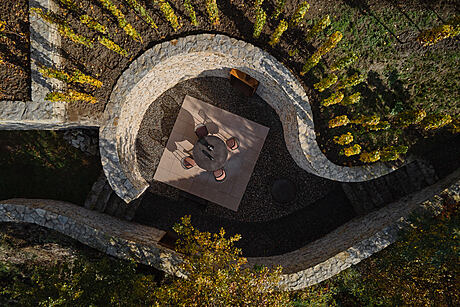
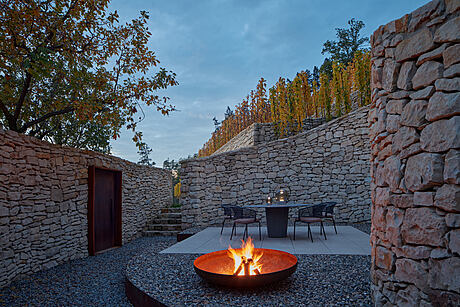
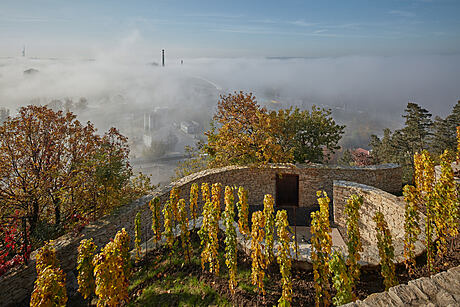
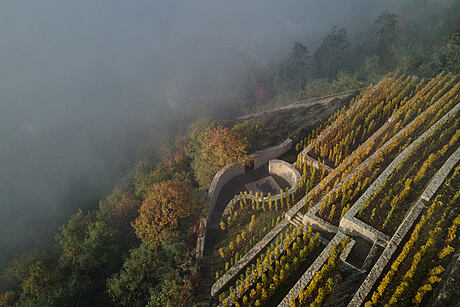
About Fibonacci
The Majestic Château Jabloňka Overlooking Prague
Perched on a rocky slope, the classicist château Jabloňka dominates Prague’s skyline. Below, terraced vineyards grant breathtaking views of the city, a standout feature in the city’s northern landscape.
From Vineyards to Apple Trees: Jabloňka’s Historical Roots
Dubbed the “city of wine,” Prague once celebrated vast vineyards during the golden age of Charles IV. Černý Kopec hill, now Jabloňka, stood proudly among them. However, post the Thirty Years’ War, deserted vineyards transitioned into apple orchards, inspiring Jabloňka’s name. By the 18th century, a classicist-style château crowned Jabloňka hill, offering captivating views of the Vltava river. Classicism, rooted in ancient Greece and Rome, values simplicity, proportion, and perfection.
The City’s Evolution and Jabloňka’s Transformation
With time, Jabloňka’s surroundings evolved. The 1830 introduction of the Northern Railway prompted city expansion. Romantic vineyard views faded, replaced by the expanding metropolis. Ironically, the late 2000s tunnel complex, Blanka, escalated traffic and pollution in the Troja area.
Despite the encroaching hustle and bustle, Jabloňka found solace. New private owners, in 2013, resurrected its vineyard legacy, introducing three exquisite wine varieties. Amid renovations, they unearthed ancient stone terraces, paving the way for a wine tasting patio.
Merging Past and Present: The Creation of an Idyllic Patio
Taking cues from history and southern European inspirations, architects envisioned an idyllic patio. This space would transport visitors away from urban chaos, reconnecting them with Jabloňka’s essence.
Amidst the vineyards, they stumbled upon a stone ruin. Harmonizing with the landscape, it hinted at a Fibonacci Spiral design, offering a tranquil oasis amidst urban noise. This rejuvenated space pulls visitors’ attention towards the château and vineyard slopes.
Preservation and Innovation: Jabloňka’s Modern Revival
Intriguing site elements drove the intervention. An old oak tree door became a symbolic centerpiece. Closed, it keeps one’s focus on the vineyards. Open, it establishes a connection with the city and hints at vineyard expansion. Another door mirrors this, doubling as a quaint wine cellar.
The Fibonacci patio, bathed in gentle indirect lighting, serves dual purposes. Its lower level manages connections, while the upper one, featuring a rounded table, beckons guests for wine tasting and socializing.
Photography by BoysPlayNice
Visit Marco Maio Architects
- by Matt Watts